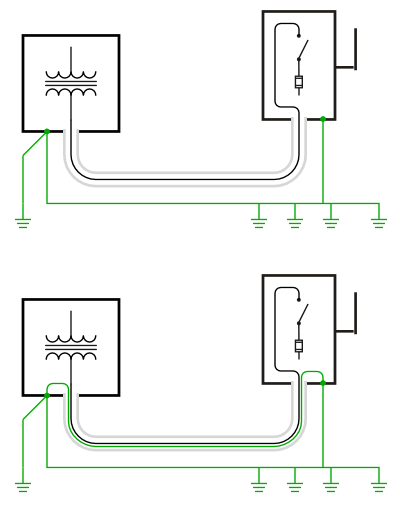I rarely have a call to inspect Ungrounded Separately Derived Systems. I presently have one for a electric furnace. 575 volt 3 phase ungrounded transformers located outside a facility with UG supply conductors in PVC to a furnace control panel inside.
The manufacturer requested the supply PVC contain the phase conductors only. The transformers and furnace equipment share a common grounding electrode system.
My first thought was that I needed equipment bonding jumpers run with the phase conductors, but it appears under the '08 Code { 250.30(B) }, that one is not required.
Am I correct that on an ungrounded SDS there is not requirement for any bonding means between the SDS and the 1st disconnecting means ?
The manufacturer requested the supply PVC contain the phase conductors only. The transformers and furnace equipment share a common grounding electrode system.
My first thought was that I needed equipment bonding jumpers run with the phase conductors, but it appears under the '08 Code { 250.30(B) }, that one is not required.
Am I correct that on an ungrounded SDS there is not requirement for any bonding means between the SDS and the 1st disconnecting means ?


